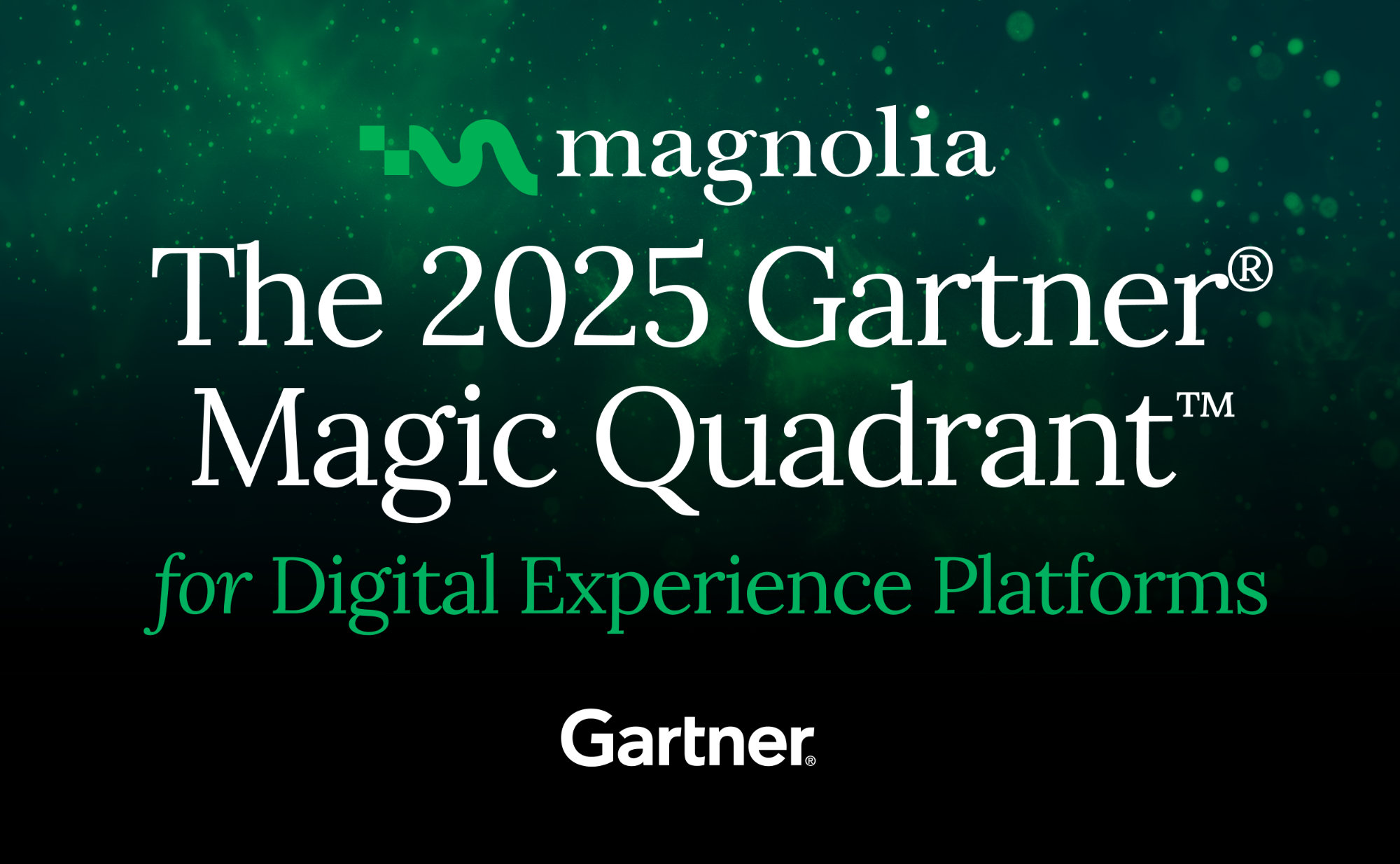- May 16, 2024
- 10 min
HCP engagement in the digital era of biopharma
Magnolia in action
Take 12 minutes and a coffee break to discover how Magnolia can elevate your digital experience.
Biopharma organizations are quickly shifting to digital-first strategies to improve how they reach and engage healthcare professionals (HCPs). Over the past several years, the impact of digital has been far-reaching, including helping biopharma reps better get them the information they need to treat patients when and where they want it
As companies look to master their use of digital and optimize channels such as HCP portals, many questions arise around compliance, the best digital tools and approaches, and how to leverage rapidly advancing technologies like artificial intelligence (AI).
To get answers to some of these questions, I recently sat down with two biopharma experts, Britt Reints, lead strategist at Crescendo Collective, and Eryn Veronesi, VP of the life sciences division at Atypical Digital, for some practical advice and actionable strategies to transform and modernize HCP engagement.
We had a wide-ranging discussion on many factors biopharma companies must consider as they make the shift to digital across their organizations and keep pace with the speed of change happening in the life sciences industry.
How has the industry changed, and people’s behavior changed, regarding biopharma’s approach to digital and their relationships with HCPs?
Eryn Veronesi: Digital was becoming more prominent, but during COVID it escalated quickly as a better way for biopharma organizations to reach and engage with their target audiences. Digital allows companies to break through the noise and engage with doctors at the right time to consume the type of information and content that's going to be most relevant to them. And now, GenAI and personalization are becoming more prominent, which is creating rapid change in the industry.
Britt Reints: I totally agree. So many changes happened, and we thought we would go back to normal after COVID. But we found that there are a lot of things we want to keep. HCPs are no different. A lot of them are doing more of their work digitally now. They’re also used to personalized marketing, as Eryn mentioned. Just like everyday consumers, HCPs have greater expectations for companies and pharma reps to know their interests.
While there is certainly a bigger push around digital, one of the biggest reasons companies may not be engaging with HCPs online is compliance. Does this reflect what you’re seeing in the market?
Eryn: Compliance is always top of mind – following the guidelines that you need to and staying up to date as different compliance requirements evolve and change. From a digital perspective, some clients are concerned with gray areas between what you can and can’t do. They want to make sure they’re navigating through what can be done, and have the technology, infrastructure, expertise, and investments in place to best manage compliance.
Britt: There is a balance between the result that needs to be achieved and staying compliant. Sometimes we see people err so much on the side of remaining compliant, that all the effort into building portals and omnichannel experiences aren’t as effective as they could be. At the same time, it’s incredibly challenging and overwhelming to manage every single piece of content that’s published and keep them updated. Balance is key, and understanding the technology, so you can find the right mix and achieve an ROI that makes sense.
Biopharma companies work globally, but compliance is a regional issue. How can companies build global solutions while staying compliant regionally?
Britt: It’s an important point. When putting various platforms or technology solutions in place, it’s key to think through how they’ll be able to adapt. You need the flexibility of a platform or workflow that works on a global level and is easy to manage, but also adaptable for regulations on a regional level, from the Middle East to western Europe to the U.S., for example. It’s an important consideration, especially when it’s not practical for every region to have their own solution, which would be an astronomical cost. So, figure out what can be standardized globally and what needs to be adaptable regionally to make life easier and save money too.
Eryn: It comes down to having a robust strategy that accounts for all these different nuances and variations and identifying where there is overlap. So, be intentional and strategic in your marketing efforts and about the technologies that you're using, which should all be interconnected. This will provide a plan from the top down that an organization can leverage, but also give individual regions something they can go back to, understand how it impacts their day to day, and ladder up to the overall organizational strategy and regional tactics they might be executing.
How do you work with biopharma companies to make the case for digital investment and the deep-rooted change that needs to happen?
Britt: It always comes down to the business use case, what is it you need to improve, and what areas you need to perform better. Do you need to engage more HCPs or reach new ones? From there you can determine the solutions to meet the problem and the budget that makes sense to accomplish what you need to. Look at it strategically, not because it’s the new thing to do, but because it will make your business better.
Eryn: AI is top of mind for many people and a good example of the shiny new thing. There’s a lot of interest and excitement around it, but lots of questions about if it can work for someone’s company and how it can be used. We help clients navigate this. They know they want to use AI, but they may have concerns around things like security. It starts with understanding the tools and technologies they may be using already, or exploring AI functionality in existing systems that can help them be more efficient and cost effective.
AI is a major area many biopharma companies are exploring. What’s your advice on how to get started?
Britt: Again, it comes back to understanding the business case and where it makes sense. Using ChatGPT to write 20 articles about a study won’t make sense, but having a solution that has been taught regional medical legal review (MLR), can scan your content, and provide insights on changes so it’s more likely to pass MLR would have a lot of value. Even something as simple as making sure all your content meets web standards. So, again, it comes down to understanding where AI can make your business better.
Eryn: There are many business use cases for AI across every department, from operations and marketing and sales to customer service and support. So, our advice is to get familiar with what’s out there, how AI works, and how you might be able to leverage it. And understand where your organization is and what policies might be or should be in place, so you can determine when you can start using it.
What are some other marketing tools and or techniques for HCP engagement? For example, how are personalization and modular content becoming more important in HCP portals?
Eryn: Marketers understand the importance of personalization and starting with the audience and the type of content and information that is going to be most relevant to them. The key is managing this in a digestible and efficient way. Make sure you’re segmenting your audience in ways that have data to support the infrastructure that you want to build, whether that’s a website, email, or another way. Then use the right tools like modular content that allows you to deliver the right information and right message at the right time, and help an HCP navigate through their journey, no matter where they are – from doing general research or product evaluation to looking for a case study. So, understand their journey, who they are, what's going to resonate most with them, and deliver a user experience that will get them where they want to go as quickly and efficiently as possible.
Britt: I mentioned this earlier, but HCPs expect personalization. And when we think about personalization in a solution, it’s more than just a name in the heading or the right content now. If I’m an anesthesiologist, the portal should learn as I’m going through my journey. So, it's not just a one-time segmentation anymore. As Eryn mentioned, use data on the back end to make sure you’re not giving an HCP the same information that they got six months ago. One of the challenges is that so many technologies are disconnected, which makes it harder to deliver the right information at the right time and make the entire HCP journey and relationship better across every tool, like your CMS and CRM, for example. Any bit of information and insight on the user, from any of these systems, is critical. Make sure your field reps, email marketers, and people running display ads can access and benefit from the same information. And the last thing, make the solution usable, no matter if people are in different locations or in different parts of their journey.
What are concrete steps companies can take to ensure that their digital content is compliant in their market and adheres to regulations in their region?
Eryn: Companies have processes and procedures in place that they need to follow. So, make sure you understand what your processes are, who needs to be involved in different regulatory approvals or compliance, and everyone in the organization is aligned. And make sure that people understand the variations globally and know what can and can’t be done in different parts of the world.
Britt: Such a good point. It sounds simple, but make sure everyone understands the basic rules. Don’t just depend on MLR. Everyone should have that basic understanding to save people weeks of work on something that isn’t doable from a compliance perspective. And be sure to ask the right questions before launching a big initiative. Compliance doesn’t happen on a global level, so just because something works in one part of the world, doesn't mean it will work somewhere else. You need experts on a local level, but everyone should be a general expert when it comes to compliance.
How do you go about establishing KPIs and working with leadership to define what success looks like?
Britt: If we're talking about a website or a portal, get clear on the business outcome, and understand which digital metric most closely aligns with what you want to achieve, and go beyond vanity metrics like ranking for keywords. Start with the KPIs that are closest to your end goal.
Eryn: It comes down to the strategy and goals, what you want to accomplish, how you’ll get there, where you are today, and what’s working or not working. With digital, we have so much more transparency compared to traditional marketing tactics. If an HCP is coming to your website or portal, where are they going and what do we want them to do next? All these pieces need to work together and be tracked and measured on the backend. We spend a lot of time trying to close this loop with clients. If you identify the strategy, align the plan, and define the goals you want to reach, you can transparently see the tactics that are keeping you on track. And then you’ll be better able to shift, adapt, and prioritize the things that are working well.
With an HCP portal, it’s important to make sure that HCPs are properly identified and authenticated. How does this sit with SEO and driving organic search?
Britt: We spent a year working with one client that had a very smart digital team and understood the value of organic search. They doubled down and spent a year working on their HCP portal specifically to improve SEO. Within the year, they achieved a 4x increase. They deal with compliance like everybody else. But like I said earlier, don’t assume all your content has to be cut off or gated because of compliance. Put content out there that can be easily found. There are ways with technology to be compliant and remain visible. Take the time to optimize your HCP portals. When our client invested the time to do that, they saw substantial results, on a global and local level.
Eryn: This is exactly right. It’s a marathon, not a sprint!









